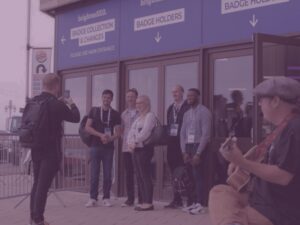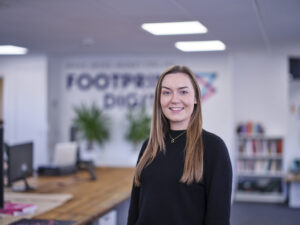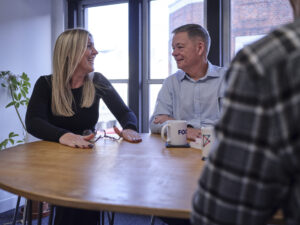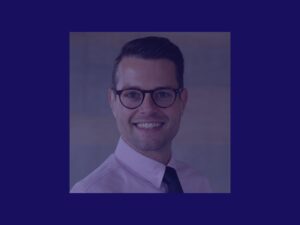
On Friday 15th September, it was time to venture south once again, for the second Brighton SEO conference of the year. We were so impressed with all that the event had to offer in April (including the free ice-cream and hot chocolate…) that we couldn’t wait to go back and glean some more technical pearls of wisdom from some of the world’s top SEO-ers (and hopefully fill our boots with more freebies).
The event was once again full to the rafters with some amazing companies, with the likes of Semrush, Trust Pilot, Word Stream, and Search Metrics (amongst many others) putting on talks and exhibiting, giving us the opportunity to talk to their employees and ask questions about new pieces of technology or software that could help our own clients.
Ranking Factors
After a quick chat with the lovely guys at Majestic, finding out about their new features and nabbing ourselves three ‘Majestic Men’ for the office (smiley-faced stress balls not new employees- for anyone who wondered!), we headed off to our first talk at 10am in the Auditorium – focused on Ranking Factors.
The speakers were Christoph Cemper, from LinkResearchTools, Searchmetrics’ Jo Turnbull & Daniel Furch, and finally, Duane Forrester, from Yext. Christoph kicked things off with a fascinating talk about how to seriously ramp up search engine traffic with ranking tips and tricks, and then Jo & Daniel provided a refreshingly different perspective on ranking factors. They wanted to get to the bottom of the underlying concept behind the most important trends within the industry – including ranking factors, user intention, content, etc.
Wrapping things up was Duane, who used to work at Bing (so knows a thing or two about search engines). His presentation looked at Markup and user driven change. A main change driven by users is that about 50% of our time is now spent on a mobile device, inside an app. Therefore, if we are going to take technology seriously, then we need to be investing in mobile.
He also spoke a lot about new developments in Voice Search and Augmented Reality, including the pitfalls that can arise with voice search when only one search result can be provided by Cortana etc.
Another fascinating thing that he mentioned was that Google have confirmed that ‘near me’ keyword phrases have flatlined. Essentially, people using search engines now expect that the search engine will be clever enough to understand when they are making local search queries – so they no longer type in ‘hairdressers near me’, they simply type ‘hairdressers’ and expect the search engine to show them local businesses. Search engines are getting smarter and users are expecting more as a result!
Advanced Keyword Research
Next, we sat in on an Advanced Keyword Research talk. First, Stacey McNaught gave a fascinating talk about tactical, practical keyword research for today’s SEO campaigns.
Sophie Coley then spoke about how to find top-notch audience insight in search data and how to then apply it through content and other methods. She spoke about how we can use data from websites such as Answer the Public (check it out – it’s a fantastic tool!) to find out exactly what people want answers to, and then use this data to create custom content that people will actually want to read. This data is also incredibly useful for keyword research to make sure that webpages are informative and containing the best long tail keywords possible.
Finally, we were treated to a talk from the event’s founder, Kelvin Newman, who spoke about scary serps and keyword creep (sounds weird, but was actually very informative!)
Fish & Chips and a bit of History
It wouldn’t be a day in Brighton without a trip to the Pier, so at lunchtime we made our way over for a fish and chip lunch (each chip was eyed up by very hungry, very large, seagulls) and a quick go on the 2p machines – Relationship Manager, Hannah’s favourite! We even managed to pop to The Royal Pavilion, a short walk away from the pier. If you’re ever in Brighton, this building really is worth a look. Construction of a large Indian inspired building started in the 1700s for a fashionable seaside retreat for George, Prince of Wales. The building has been added to over the years, including the addition of minarets & domes by John Nash in 1815. Queen Victoria wasn’t a fan; however, and she sold the building to Brighton, when it became a tourist attraction and even acted as a military hospital during WW1.
Content Strategy
After lunch, it was back to the conference for a lesson in content. The session on content strategies was led by Jade Tolley, Laura Hampton, and Alan Cairns. They talked on a variety of topics, including the shortcomings of data for content strategy, as well as the best ways to create a customer focused content plan.
Once again, we were thoroughly impressed with everyone presenting and exhibiting at Brighton SEO – the passion and dedication everyone had for their specific field was evident, and we left feeling tired, but inspired to try new things in the realms of SEO. See you next year, Brighton!








